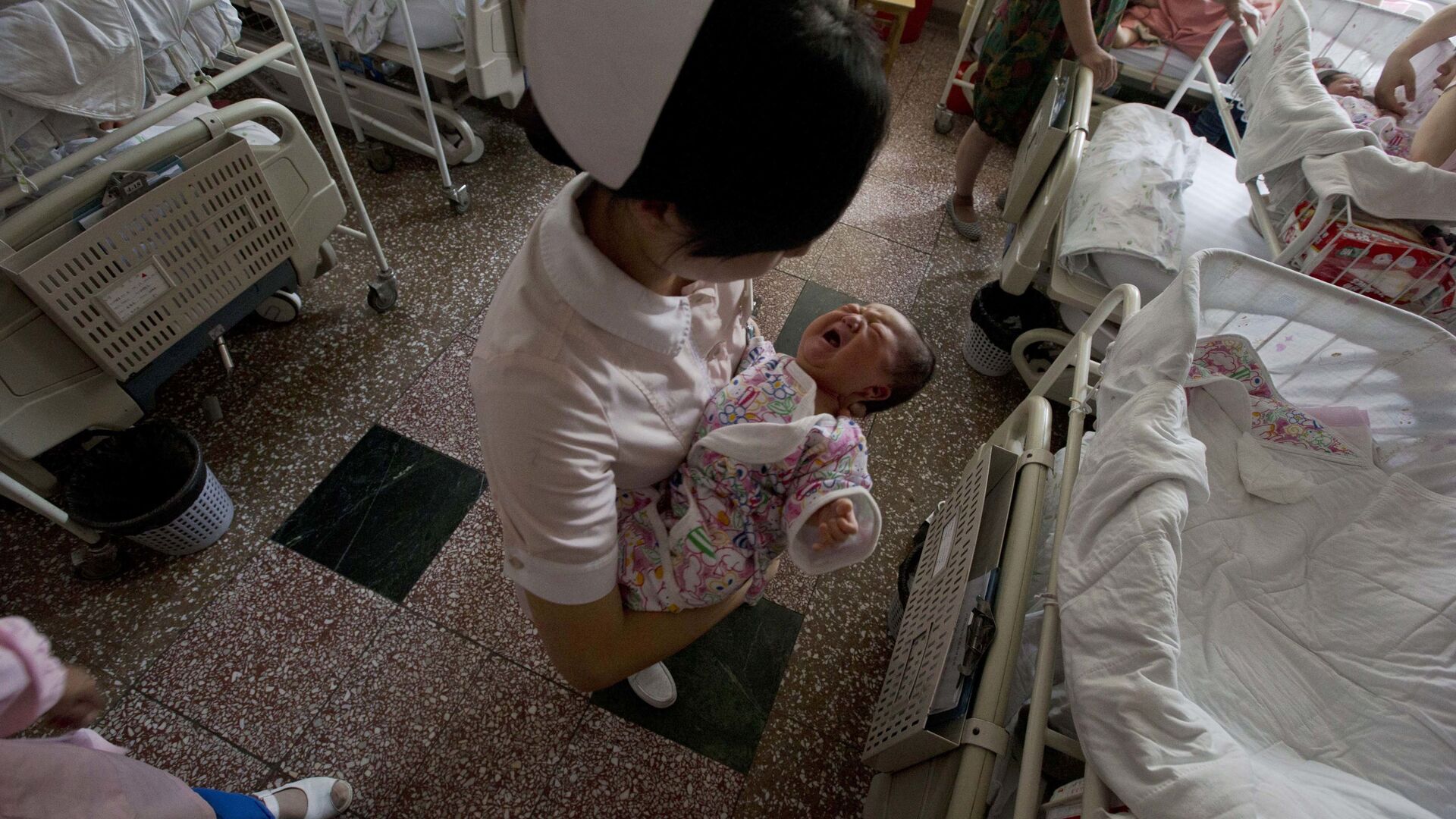https://sputnikglobe.com/20221017/china-to-enact-policies-to-boost-birth-rates-1101910779.html
China To Enact Policies To Boost Birth Rates
China To Enact Policies To Boost Birth Rates
Sputnik International
China’s one-child policy was first enacted in 1980 and ended in 2016. The policy allowed one child per family in an effort to address what the government saw... 17.10.2022, Sputnik International
2022-10-17T03:58+0000
2022-10-17T03:58+0000
2022-10-17T04:00+0000
world
china
population
population decline
population growth
population control
https://cdn1.img.sputnikglobe.com/img/07e5/05/0b/1082857802_0:160:3073:1888_1920x0_80_0_0_cb98148cb33f8ba7113a69077c718385.jpg
Chinese President Xi Jinping said on Sunday that he plans to enact policies that will help boost the declining birthrate in his country.The Chinese government first began regulating how many children their citizens could have in 1970. In 1980 they enacted the one-child policy which led to forced-abortions, families having to hide their pregnancies, and the abandonment and murder of female infants. China ended their one-child policy in 2016 and opened a two-child policy for families."When you create a system where you would shrink the size of a family and people would have to choose, then people would... choose sons," said Mei Fong, a journalist and China correspondent for The Wall Street Journal. "Now China has 30 million more men than women, 30 million bachelors who cannot find brides. They call them guang guan, 'broken branches,' that's the name in Chinese. They are the biological dead ends of their family."In 2021 China changed their two-child policy to allow families three children. The fertility rate for that year was 1.16 (births per woman), which is well below the Organization for Economic Co-operation and Development’s (OECD) stable population standard of 2.1. In 1966 China’s birth rate was 6.4. This year the country’s birth rates dropped 11.5% since 2020 with 10 million babies being born in a nation of 1.4 billion people.While the country may have one of the lowest fertility rates in the world, women in China have little interest in having children. Chinese women have been reported to have the lowest desire to have children in the world, according to a February survey by YuWa Population Research.The government’s introduction of tax deductions, longer maternity leave, increased medical insurance, housing subsidies and tackling the high costs of private tutoring may encourage some young women to change their stance on parenthood. Still, the country must first address education costs, low wages and labor rights as well as COVID-19 policies, says demographers.
https://sputnikglobe.com/20221016/two-indian-teens-go-missing-for-56-days-near-china-border-1101894312.html
china
Sputnik International
feedback@sputniknews.com
+74956456601
MIA „Rossiya Segodnya“
2022
News
en_EN
Sputnik International
feedback@sputniknews.com
+74956456601
MIA „Rossiya Segodnya“
Sputnik International
feedback@sputniknews.com
+74956456601
MIA „Rossiya Segodnya“
china, population, population decline, population growth, population control
china, population, population decline, population growth, population control
China To Enact Policies To Boost Birth Rates
03:58 GMT 17.10.2022 (Updated: 04:00 GMT 17.10.2022) China’s one-child policy was first enacted in 1980 and ended in 2016. The policy allowed one child per family in an effort to address what the government saw as a rapidly growing population. China’s patriarchal beliefs led to female infanticide and abandonment. In 2021 China had a population made up of 723 million men and 689 million women.
Chinese President Xi Jinping said on
Sunday that he plans to enact policies that will help boost the declining birthrate in his country.
"We will establish a policy system to boost birth rates and pursue a proactive national strategy in response to population ageing," Xi told some 2,300 delegates in a speech at the Communist Party Congress in Beijing.
The Chinese government first began regulating how many children their citizens could have in 1970. In 1980 they enacted the one-child policy which led to forced-abortions, families having to hide their pregnancies, and the abandonment and murder of
female infants. China ended their one-child policy in 2016 and opened a two-child policy for families.
"When you create a system where you would shrink the size of a family and people would have to choose, then people would... choose sons," said Mei
Fong, a journalist and China correspondent for The Wall Street Journal. "Now China has 30 million more men than women, 30 million bachelors who cannot find brides. They call them guang guan, 'broken branches,' that's the name in Chinese. They are the biological dead ends of their family."

16 October 2022, 09:58 GMT
In 2021 China changed their two-child policy to allow families three children. The fertility rate for that year was 1.16 (births per woman), which is well below the Organization for Economic Co-operation and Development’s (OECD) stable population standard of 2.1.
In 1966 China’s birth rate was 6.4. This year the country’s birth rates dropped 11.5% since 2020 with 10 million babies being born in a nation of 1.4 billion people. While the country may have one of the lowest fertility rates in the world, women in China have little interest in having children. Chinese women have been reported to have the lowest desire to have children in the world, according to a February survey by YuWa Population Research.
The government’s introduction of tax deductions, longer maternity leave, increased medical insurance, housing subsidies and tackling the high costs of private tutoring may encourage some young women to change their stance on parenthood. Still, the country must first address education costs, low wages and labor rights as well as COVID-19 policies, says demographers. 


